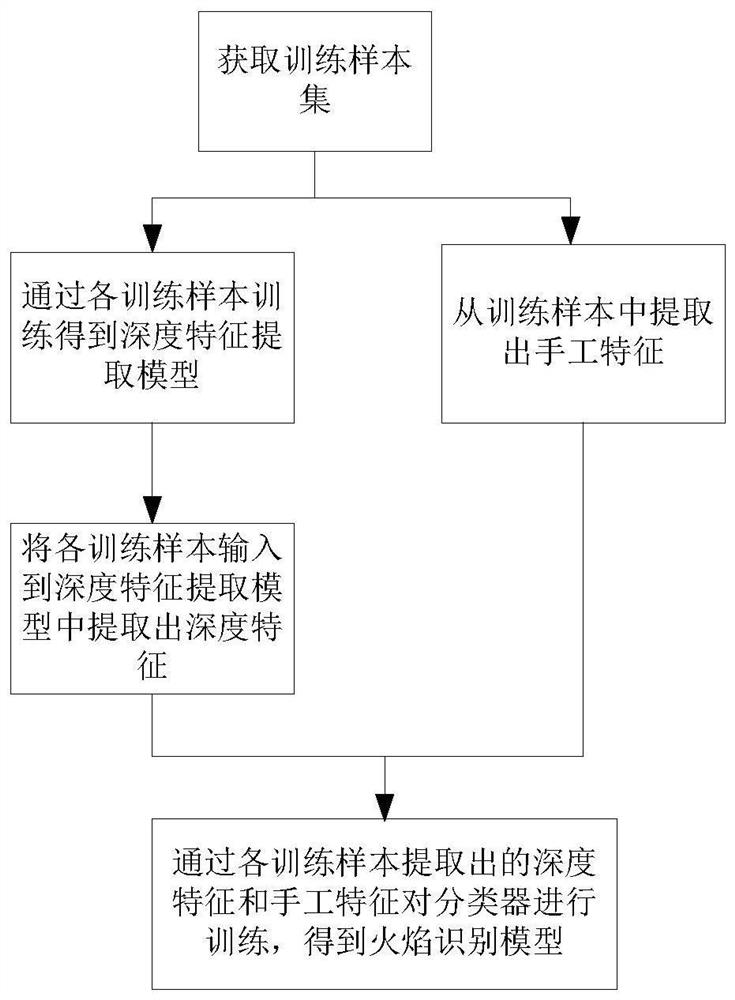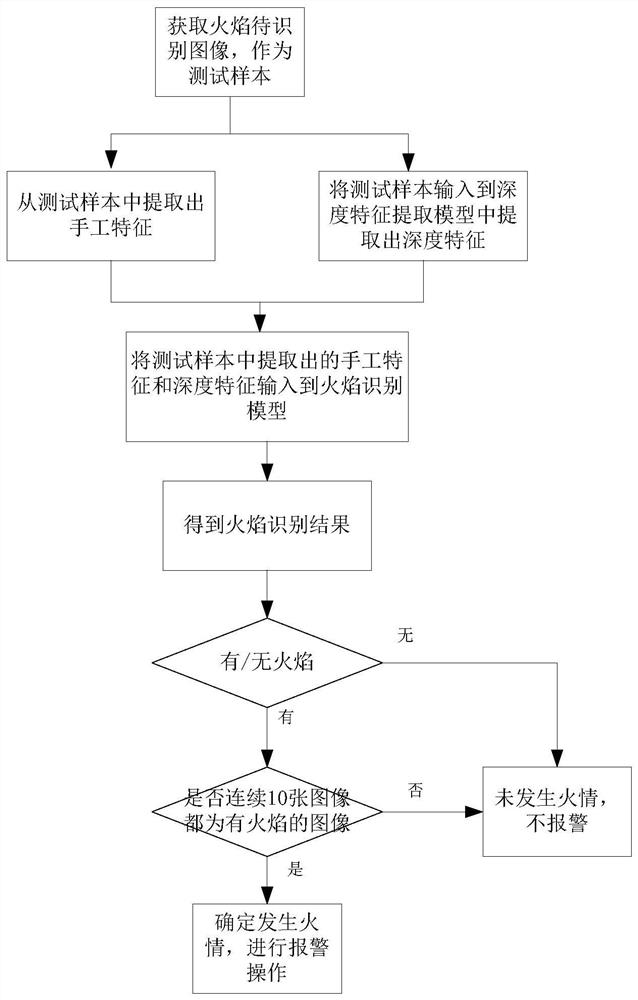A flame identification method, system, medium and equipment
A flame identification, flame technology, applied in the field of flame identification
- Summary
- Abstract
- Description
- Claims
- Application Information
AI Technical Summary
Problems solved by technology
Method used
Image
Examples
Embodiment 1
[0103] This embodiment discloses a flame identification method, comprising the following steps:
[0104] Step 1. Model building steps, such as figure 1 Shown:
[0105] Step 1-1, obtain a training sample set, the training sample set includes a plurality of labeled training samples, the training samples are flame images or non-flame images, and the label of each training sample is flame or no flame;
[0106] Step 1-2, each training sample is used as input, and the label of each training sample is used as output to train the convolutional neural network to obtain a trained convolutional neural network, after removing the fully connected layer in the trained convolutional neural network As a deep feature extraction model;
[0107] Steps 1-3, input each training sample into the depth feature extraction model to extract depth features; extract manual features from training samples; use the depth features and manual features extracted from each training sample as input, and label e...
Embodiment 2
[0192] This embodiment discloses a flame recognition system, including a model building module and a flame recognition module;
[0193] Model building blocks include:
[0194] The training sample acquisition module is used to acquire a training sample set, the training sample set includes a plurality of labeled training samples, the training samples are flame images or non-flame images, and the label of each training sample is flame or no flame.
[0195] The deep feature extraction model building block is used to use each training sample as input and the label of each training sample as output to train the convolutional neural network to obtain a trained convolutional neural network. After the connection layer is removed, it is used as a deep feature extraction model; in this embodiment, the convolutional neural network can use the residual network Residual Network, and the ResNet18 network obtained after removing the fully connected layer in the trained convolutional neural n...
Embodiment 3
[0218] This embodiment discloses a storage medium, which stores a program, and is characterized in that, when the program is executed by a processor, the flame identification method in Embodiment 1 is implemented, specifically as follows:
[0219] Step 1. Model building steps:
[0220] Step 1-1, obtain a training sample set, the training sample set includes a plurality of labeled training samples, the training samples are flame images or non-flame images, and the label of each training sample is flame or no flame;
[0221] Step 1-2, each training sample is used as input, and the label of each training sample is used as output to train the convolutional neural network to obtain a trained convolutional neural network, after removing the fully connected layer in the trained convolutional neural network As a deep feature extraction model;
[0222] Steps 1-3, input each training sample into the depth feature extraction model to extract depth features; extract manual features from ...
PUM
 Login to View More
Login to View More Abstract
Description
Claims
Application Information
 Login to View More
Login to View More - R&D
- Intellectual Property
- Life Sciences
- Materials
- Tech Scout
- Unparalleled Data Quality
- Higher Quality Content
- 60% Fewer Hallucinations
Browse by: Latest US Patents, China's latest patents, Technical Efficacy Thesaurus, Application Domain, Technology Topic, Popular Technical Reports.
© 2025 PatSnap. All rights reserved.Legal|Privacy policy|Modern Slavery Act Transparency Statement|Sitemap|About US| Contact US: help@patsnap.com



